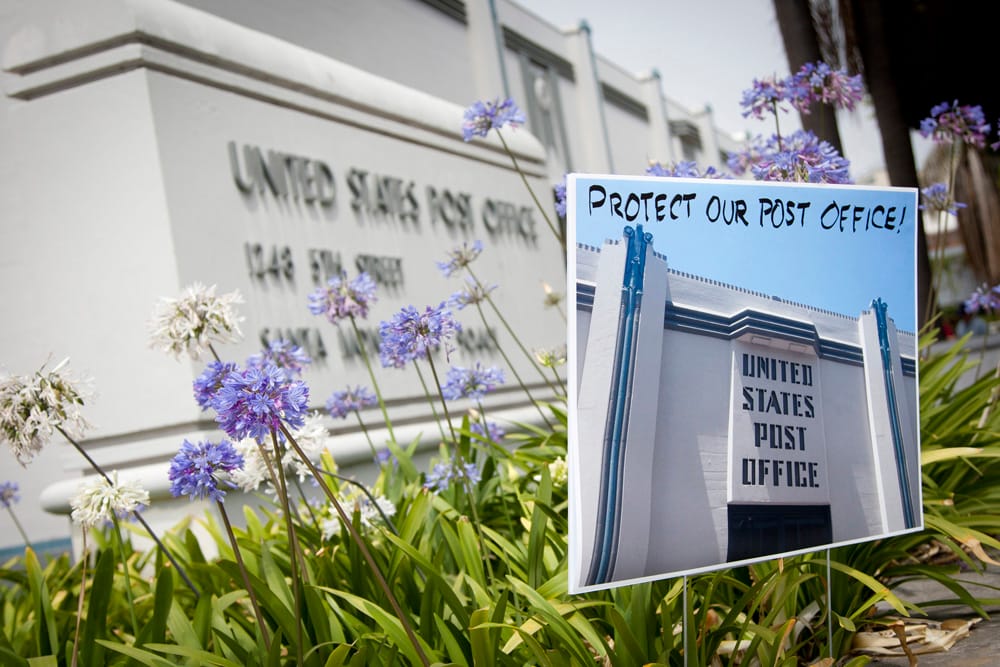
CITY HALL — Thanks to a preservation covenant approved by the City Council Tuesday, the historical elements of the closed post office at Fifth Street and Arizona Avenue will remain intact.
The council voted 5-1 to approve the covenant, with Mayor Pam O'Connor casting the lone dissenting vote.
The covenant would prohibit those who purchase the property and any future owners from altering anything on the property that would affect the historic features without first seeking approval of City Hall. Some of the building's historic features include the wood frame windows, the ornamental metal fence, and the original hanging light fixtures.
Once the covenant is in place the postal service may proceed with the sale of the property, similar to what was done with a post office in Venice that was purchased by blockbuster movie producer Joel Silver.
The Fifth Street post office is a New Deal-era building and part of a national plan to pawn off properties to plug the multi-billion dollar hole in the United States Postal Service's budget. The postal service shut down the old post office in June and a new location, at the Santa Monica Carrier Annex on Seventh Street near Olympic Boulevard, opened in July.
Margaret Bach, a member of the Landmarks Commission, said the City Council had a "rare instance of consensus" in front of them Tuesday.
"And in this case, it's consensus on a preservation issue," she said. "You agreed to protect a treasured historic building in the heart of Santa Monica."
City Attorney Marsha Moutrie said the community had indicated a strong interest in doing whatever could be done to preserve the historic structure.
The post office, which began serving Santa Monicans in 1937, is eligible for a listing in the National Register of Historic Places, which requires the postal service to follow requirements imposed by certain federal regulations prior to transferring the post office to private ownership. The federal regulations say transferring a historic property "without adequate and legally enforceable restrictions or conditions to ensure the long-term preservation of the property's historic significance" triggers a lengthy review process, according to a city staff report.
To avoid that process, the postal service proposed entering into a preservation covenant.
O'Connor said the building is definitely a historic building, but this wasn't the way to go about preserving it.
"What this is doing is shifting the responsibility to the local government," O'Connor said. "I don't think this is the way we should go about preserving the building. [It] has more problems going forward. It's going to have some messy situation for a council in the future."
The postal service committed to sell the building and other historic edifices in its portfolio to buyers willing to protect key elements, officials with the agency said.
Roger Genser, a member of the Landmarks Commission, called the council's decision "one of those rare instances where we have an opportunity to save a real bit of historic fabric of our Downtown."
"[T]his building is really special and supported by a lot of people in the community," Genser said.
Rallies have been held to protect the post office and dozens of residents spoke out against the postal service's decision to close it, citing its historical significance and concern that the new main post office on Seventh Street was not as easily accessible nor safe to use given its proximity to the incoming Exposition Light Rail Line.
ameera@www.smdp.com

